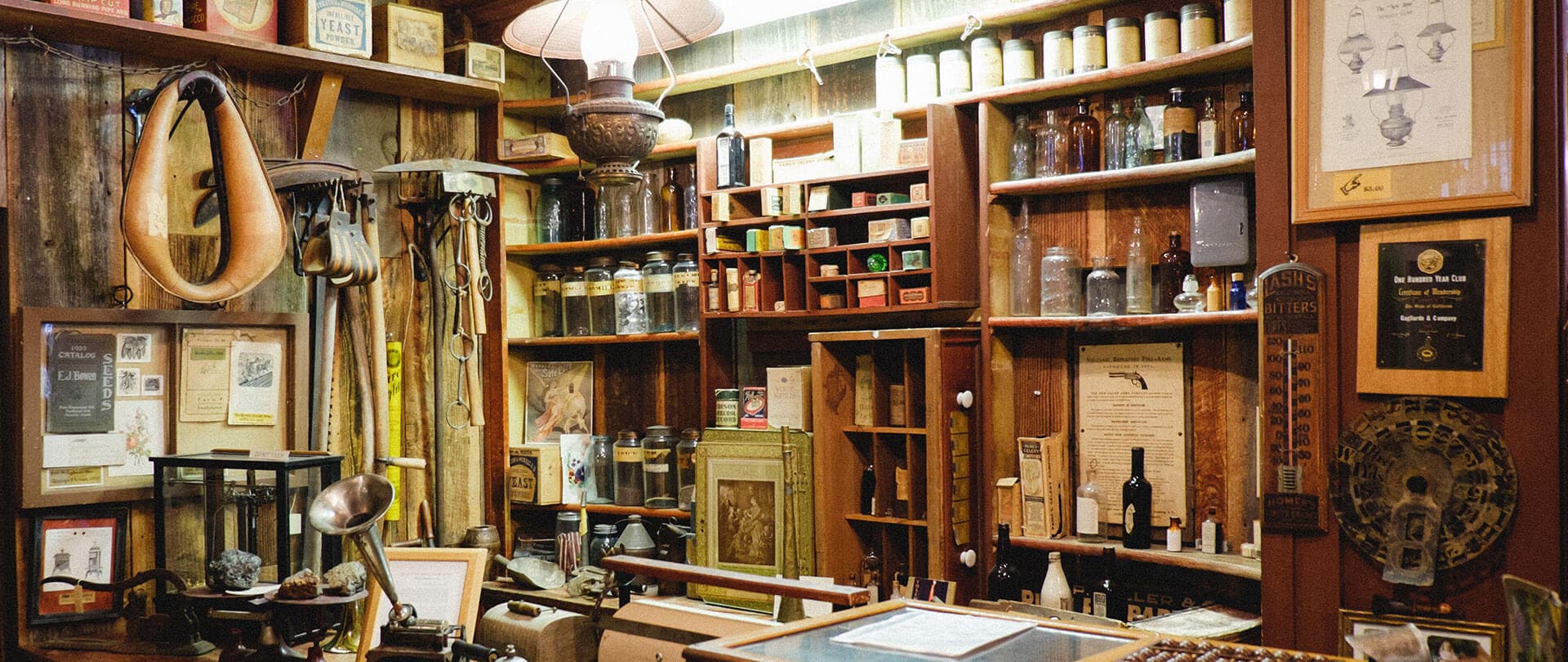Of all the gold rush towns in California, none has a richer history than Mariposa. Nestled in the Sierra foothills along the historic Golden Chain Highway (Hwy 49), Mariposa serves as the gateway to Yosemite National Park while boasting deep ties to native cultures and immigrants alike.
From the Miwuk to the Mexican rancheros of Alta California to Asian and European settlers, the lure of Mariposa County has always been strong. And once they came — eureka or bust — the bounty and the beauty of this unique landscape made the decision to stay as easy as a warm day in the California sun.
To help retrace these bold immigrants’ footsteps we’ve put together a three day/two night itinerary along the Mariposa Gold Rush trail. Rugged, deep-rooted, and full of discoveries, this adventure is sure to satisfy everyone from free-spirits to families and, yes, fans of yesteryear.
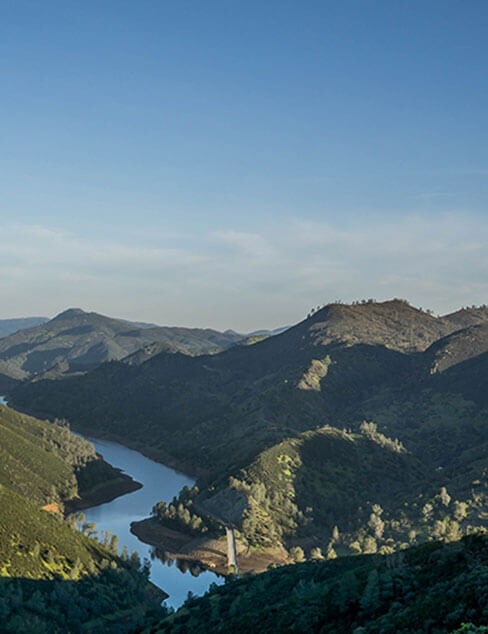
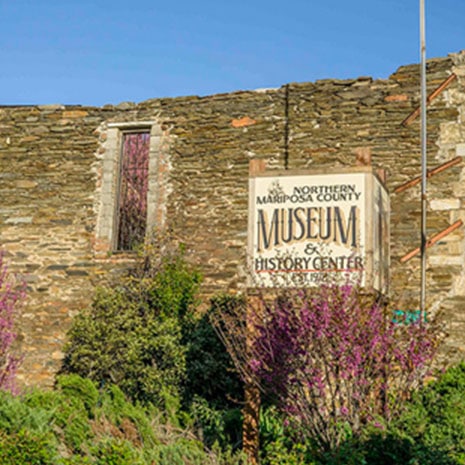
Coulterville
Compared to modern life back home, arriving in Coulterville can feel like whoa! with its boomtown bona fides. Situated at the crossroads of the Golden Chain Highway (Hwy 49) and the John Muir Highway (J132), Coulterville is the historical heart of Northern Mariposa County. Its 42 designated historical buildings and easily walkable main street are mortared with Gold Rush charm, while proud locals and weekend brunch add to the unique vibe of past meets present.
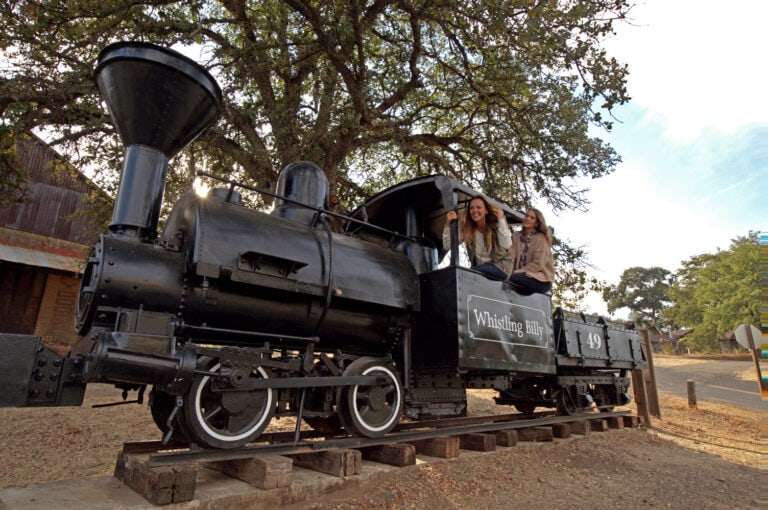
Compelling Chronicle: In 1850, George Wilson Coulter (1818-1902) saw an opportunity. He set up a canvas tent at the confluence of Maxwell, Black and Boneyard Creeks, topped it with an American flag, and began providing local gold miners with essential supplies. His success led to the founding of Coulterville. Hotels and businesses followed, and soon this rough & tumble town boasted nine different nationalities including the Mother Lode’s largest Chinatown. Coulterville, in short, embodied the immigrants’ Gold Rush quest.
Historical Happenings: The best way for visitors to get an aerial view of the Mariposa Gold Rush and Coulterville history is by visiting the Northern Mariposa County History Center. Partially set in the brick remnants of the local Wells Fargo office (1856) and the Coulterville Hotel, it features displays about early pioneers and the Gold Rush “boom” that followed.
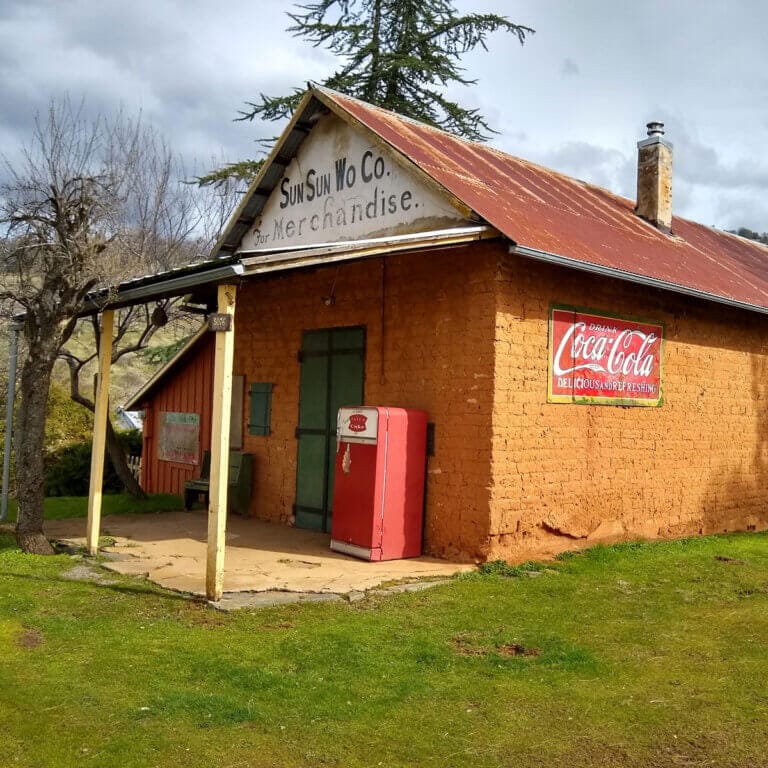
The ideal follow-up to the History Center is to get out on the street and see for yourself the architecture that’s straight out of a blockbuster Western. Take the self-guided Coulterville walking tour and check out its nine historical plaques, not to mention such properties as the Sun Sun Wo Store — an integral part of the fascinating Chinese history of Yosemite Mariposa County.
Forty (Niner) Winks: History buffs and train nerds unite at the Vacation Station, a lovingly appointed 1964 Boxcar and Caboose that can be booked together or separately and feature kitchen, private bedroom and raised seating area known as a cupola. Built in 1854, the reputedly haunted Hotel Jeffery screams Old West and once hosted the likes of John Muir and President Teddy Roosevelt. Now closed, the Jeffery is currently being renovated and slated for a 2023 grand re-opening.
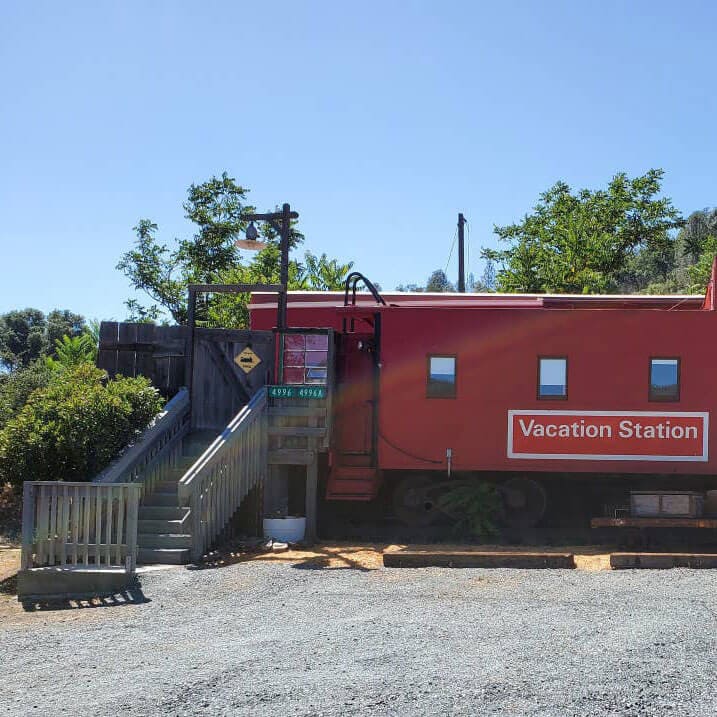
Extra Rush: Historic Coulterville circles the wagons every year for CoyoteFest, an outdoor celebration of the town’s unique past featuring tasty food, music, beer garden and signature Howling Contest.
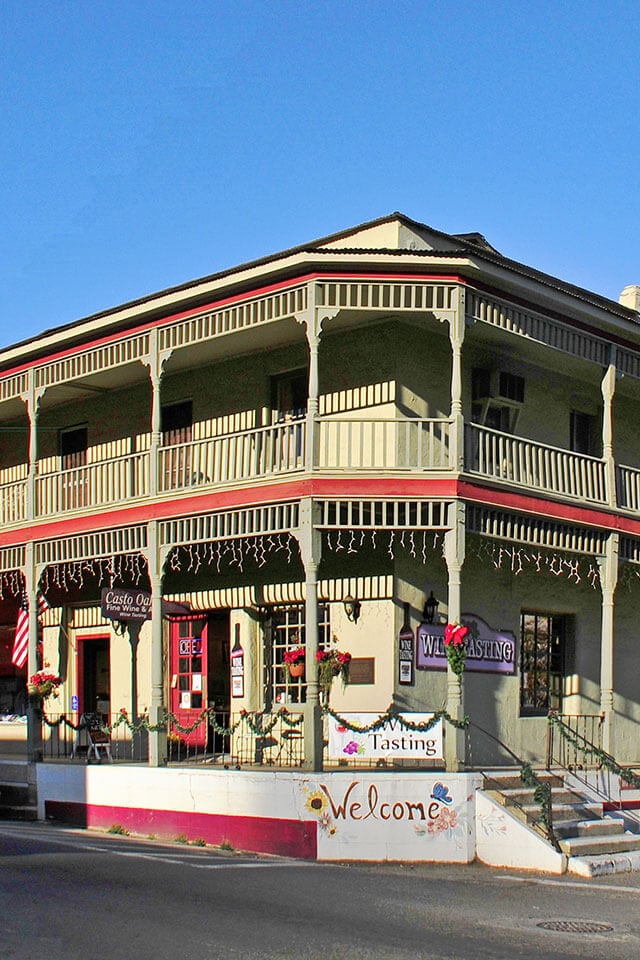
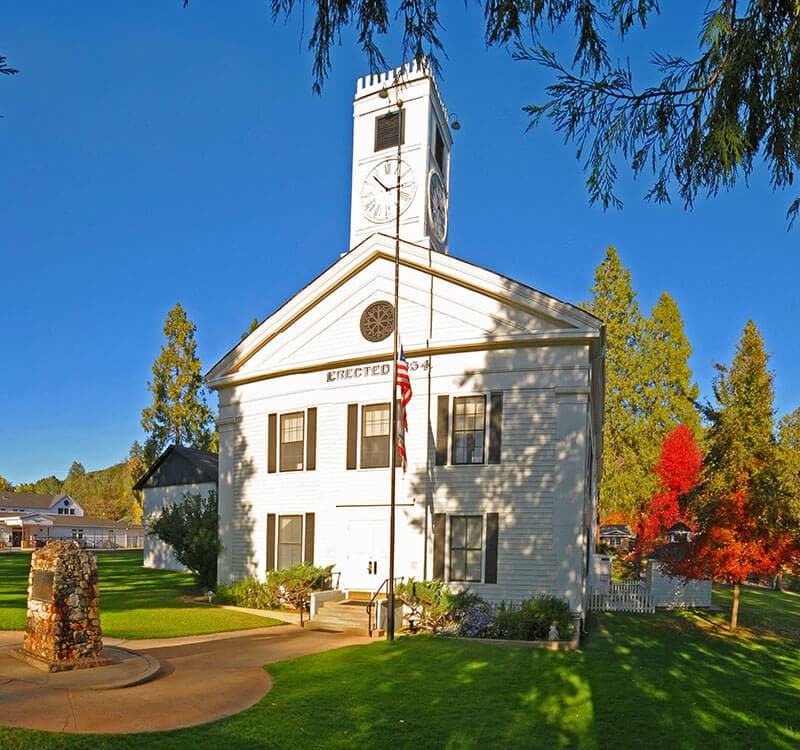
Mariposa
Strolling the streets of the town of Mariposa you’ll find plenty of historic buildings with interesting stories.
The scenic 27-mile drive from Coulterville to Mariposa winds south along Highway 49 offering visitors a glimpse of the rolling Sierra foothills just as they were during the Gold Rush. At the 10-mile mark, the road crosses the inlet of the Merced River as it feeds Lake McClure. An intriguing sidebar is the underwater ghost town of Bagby. Once a mining camp, hotel and important stop on the Yosemite Valley Railroad, it was submerged when Lake McClure was dammed. Now, Bagby is a campground and recreation area where remnants of the lost town can be seen seasonally when the water is low.
Your arrival in the “big city” of Mariposa is greeted with a colorful cast of locals and tourists alike, not to mention a well-mapped grid of streets dotted with a mix of 63 historic buildings and Sierra-chic bars & restaurants. Set at 1,949 ft (594 m), Mariposa is the hub of Central Mariposa County and boasts a rich history that pre-dates the Gold Rush. Today, Mariposa continues to evolve as the gateway to Yosemite National Park and is one of the few California towns of a certain size still without a stop light.
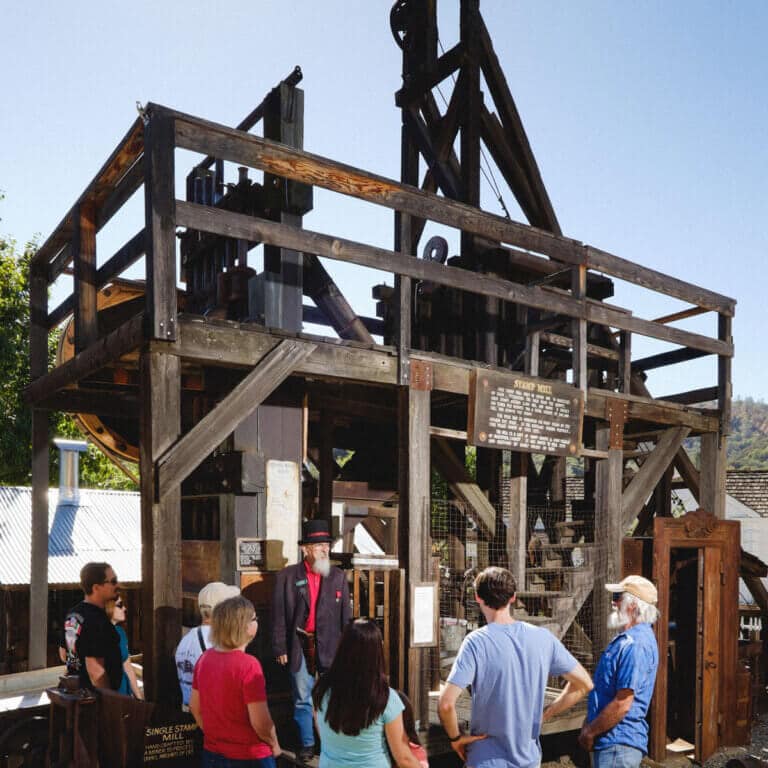
Compelling Chronicle: The Southern Sierra Miwuk called the Mariposa region home some 8,000 to 10,00 years before the Gold Rush as evidenced by oral histories, grinding rocks and place names. In 1806, Spanish explorer Gabriel Moraga bestowed the name Las Mariposas — or butterflies — for the large number of winged beauties he discovered here.
The Gold Rush era began in 1847 when soldier/explorer/future Presidential candidate John C. Fremont purchased Rancho Las Mariposas and its massive 43,000 acres (67 square miles), part of a Mexican ranch land grant. Interesting note…Fremont had actually tasked his agent Thomas O. Larkin to purchase the Santa Cruz ranch near the current town of San Jose, but somehow he got lost and purchased Las Mariposas instead! The mistake didn’t take long to become a blessing.
Gold was discovered the following year and the rest, as they say, is history.
Fun Fact: Mariposa saw a boon of visitors with the building of All-Season Highway 140 in 1926. The route passes through town then follows the stunning Wild & Scenic Merced River into Yosemite National Park.
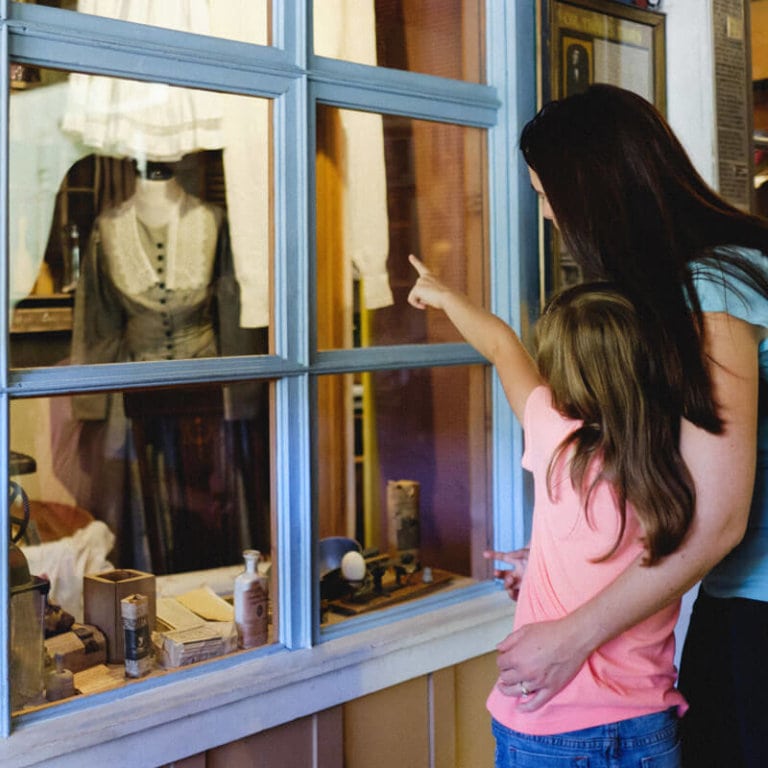
Historical Happenings: For the historically-minded, there is a wealth of things to do in Mariposa. The Mariposa Museum & History Center brings the whole picture into focus with vivid displays on Gold Rush history, not to mention well-curated exhibits on Native American life in Yosemite Mariposa that include indigenous baskets, artifacts and an umacha — a teepee-shaped dwelling that’s covered in cedar bark.
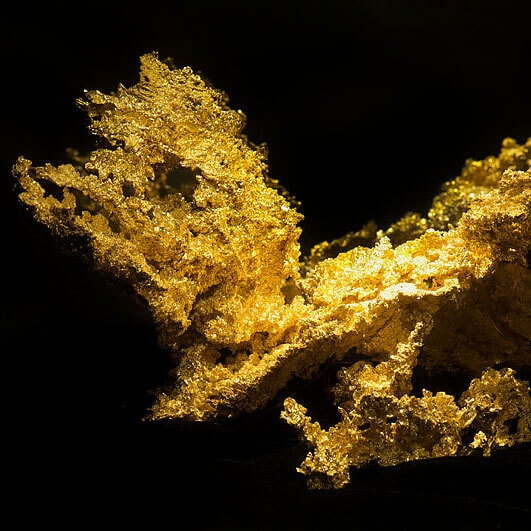
Check out the California State Mining & Mineral Museum for a gem-centric dive into the precious metals that transformed California history. Located at the Mariposa County Fairgrounds, the museum features Gold Rush historical documents, a re-created mining tunnel, and the Fricot Nugget — a 13.8-pound behemoth discovered in 1864, the largest remaining mass of crystalline gold from 19th century California. For those multi-taskers who like to stroll and learn, grab a map of Mariposa and check out historic buildings such as the rough-hewn Mariposa Jail and the Mariposa County Courthouse. Built in1854, it’s the oldest superior courthouse west of the Mississippi River.
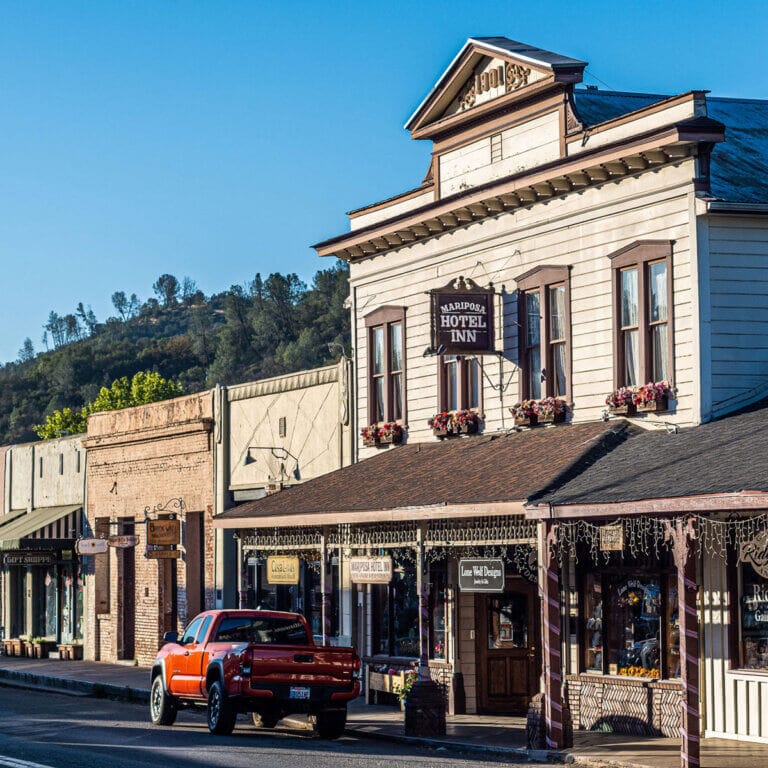
Main Forks: Choosing where to eat in Mariposa is an exercise in gastronomic free will. From smoked meats and local brews to vegan treats and taco trucks, it’s an embarrassment of dishes served in range of settings from simple to sophisticated.
Forty (Niner) Winks: Historic lodgings in Mariposa County come with the territory. Rest easy after a day of museum-hopping at the Mariposa Hotel Inn with its six guest rooms decorated in period style. Located on the original site of a bawdy Gold Rush bar/hotel, the current building dates to 1901 and Marguerite’s Room even features a clawfoot tub from that same year. The boutique River Rock Inn encompasses a historic house that was built in 1891 and hotel built in 1941. Wine on their spacious garden patio just tastes better after a day of chasing history, and on-site Sticks Coffee is the perfect place to start your day with locally-roasted arabica and avocado toast.
Extra Rush:
For a deeper understanding of what it means to be Mariposan, visit one of its art galleries where local masters capture the spirit of nature and its Gold Rush past.
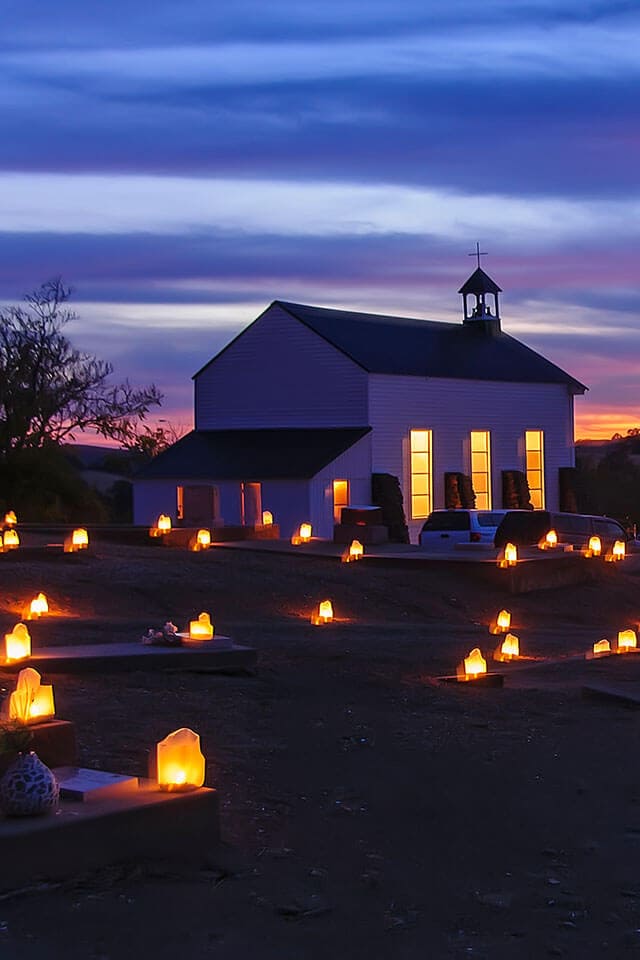
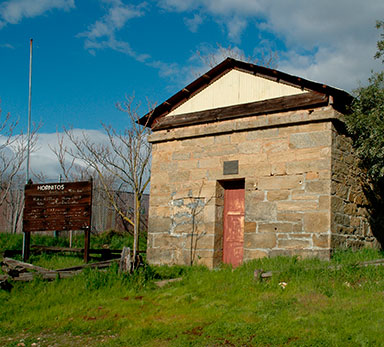
Your return day is just made for Hornitos. Located 20 miles from Mariposa, this hub of the Southern Mariposa County region punches well above its weight class in vivid Gold Rush history.
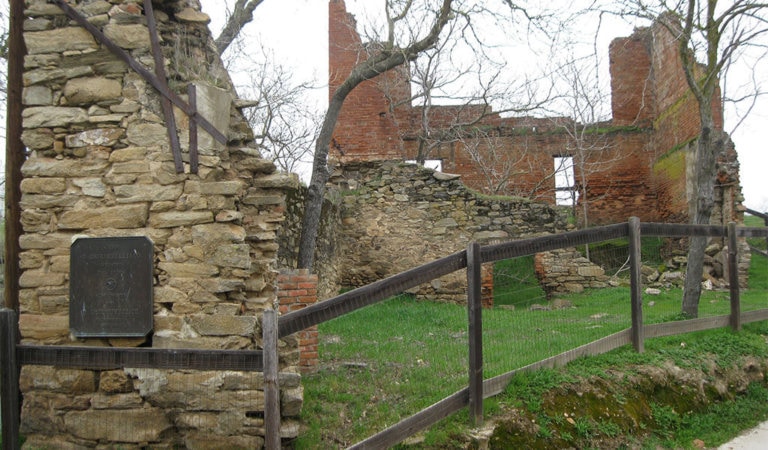
There are several routes to get here, but all take you through the gentle sweep of Sierra foothill scenery where there are more galloping horses than cars and more rowdy tales than residents to tell them. Hornitos’ small but mighty footprint is easily explored in a few hours — the perfect final stage coach stop along the Mariposa Gold Rush trail.
Compelling Chronicle: With a population hovering around 50 people, Hornitos is technically not a ghost town but it takes some imagination to grasp that 10,000 fortune-seekers once lived here. Originally a Mexican village that sprang up after the discovery of gold in nearby Quartzburg, Hornitos means “little ovens” in Spanish and was named for the above-ground rock and adobe graves of Mexican settlers found in the area. With a sudden influx of wealth, its reputation as a gritty outpost of saloons, fandango dancehalls and frontier justice was soon forged, attracting such unlikely contemporaries as bandit-hero Joaquin Murrieta and chocolatier “Domingo” Ghirardelli. In 1870 Hornitos became the first incorporated city in Mariposa County, but dwindling gold led to dwindling residents. A hundred years later, in 1973, this once-thriving Gold Rush outpost became unincorporated thus confirming its boomtown status.
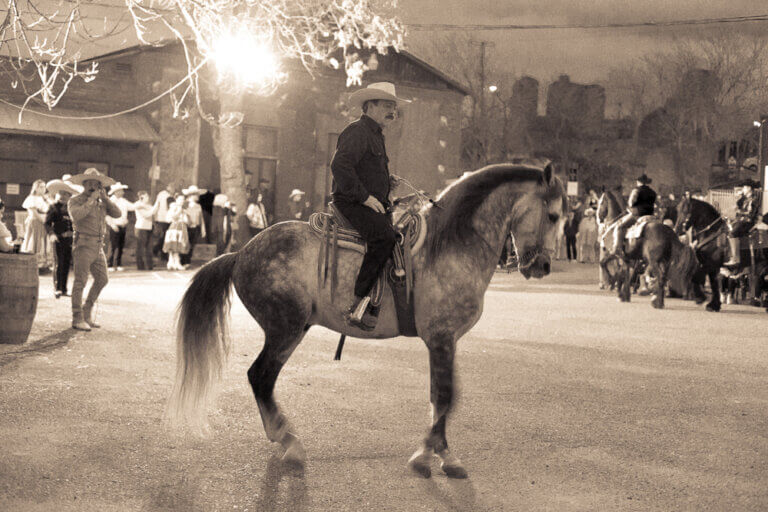
Historical Happenings: There’s one essential thing to do in Hornitos: absorb Gold Rush history by walking its narrow lanes. Park in the main plaza and check out the architectural echos of years past such as the D. Ghirardelli & Co store, the Hornitos Masonic Hall and the austere, windswept St. Catherine’s Church just up the hill. Be sure to have your camera ready — the opportunity for IG-worthy pics of these haunting buildings is more than prime, and yet another unique angle on Yosemite Mariposa County photography.
Main Forks: Okay, so there aren’t any full-time restaurants in Hornitos, but it’s a great place grab some picnic supplies before you leave Mariposa and have lunch in Hornitos Park. If a Bloody Mary is your thing, there’s no better local hang than the Plaza Bar (hours can vary) to hear stories old & new about life in this hardscrabble Gold Rush gem.
Extra Rush: For those visitors wise enough to visit in fall when there’s more room to roam, the Dia De Los Muertos/All Souls Day celebration in Hornitos is a festival to behold. Taking place every November 2, observers meet in the main plaza and follow a short, candlelit procession through town and up to St. Catherine’s Church. What better way to honor those who came before? Oh, face paint and costumes are welcome!
Mariposa Travel Tips
- While relatively mild in winter, the Mariposa Gold Country can get downright hot in summer. Be sure to check local weather and dress for the seasons.
- Visiting outside of the typical summer tourist season offers a better chance to see these Gold Rush towns as they truly are, not to mention a more leisurely pace to chat with the people who actually live there.
- Small town business owners are often pulled in many directions. Be sure to check that they’re open when planning your trip, even if it means a good old-fashioned phone call.
To explore lodging options, things to do and places to eat, visit Yosemite.com, the #1 trip planning site for vacations to Yosemite National Park and historic Mariposa County. To stay up to date, follow @YosemiteNation on social media and subscribe to our newsletter, “The Wanderer”. Be sure to subscribe to our YouTube channel for great videos on the people and places of Yosemite Mariposa County.

